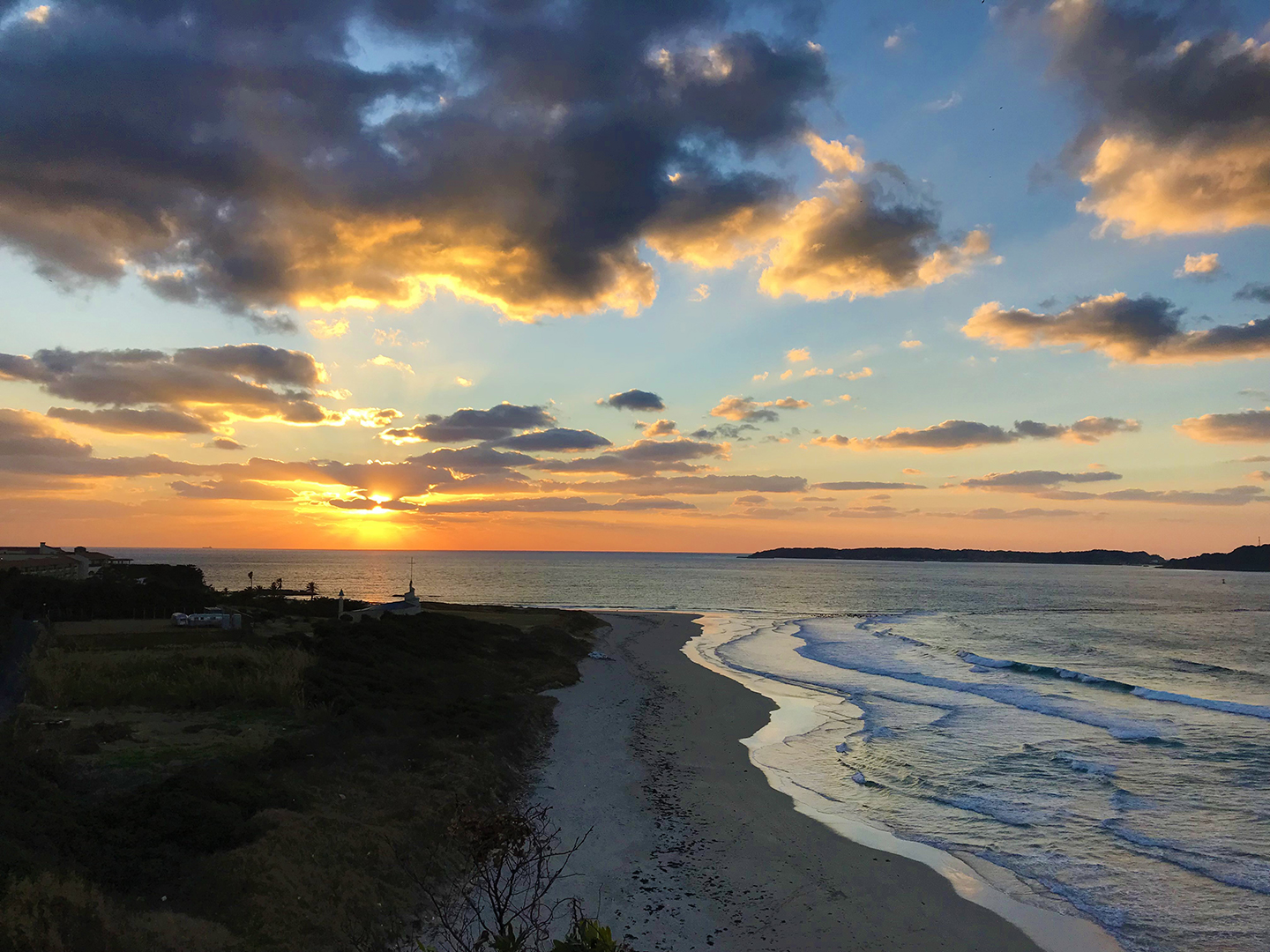Nature is deeply intertwined with Japanese life, represented in festivals, seasonal gourmet, spirituality, and a variety of outdoor activities.
Western Japan gives you access to a diverse range of nature—from coastal landscapes and islands to massive sand dunes and mountains—acting as an enriching getaway where you can uncover stories of the past and reconnect with the Earth and yourself.
Discover the region’s breathtaking natural beauty below.
Okayama Prefecture
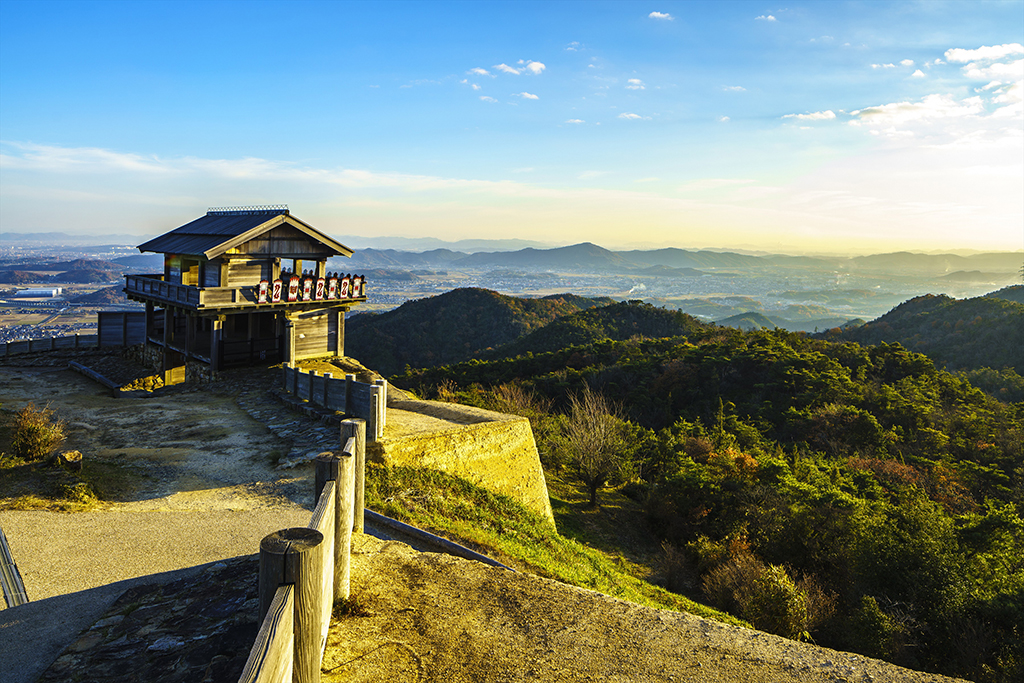
Okayama is a largely rural prefecture that merges historical learning with the great outdoors. Resting just outside Okayama City, Kinojo Castle is an ancient mountaintop fortress best known for its Western Gate and 2.8 kilometers of castle walls encircling Mt. Kinojozan’s summit. Follow the stone-paved hiking course along the castle walls and enjoy breathtaking sunset and sunrise views from the Western Gate. The partially nature-reclaimed ruins evoke a deep sense of “Mono No Aware”—a Japanese concept that emphasizes life’s impermanence and the fleeting beauty of the present.
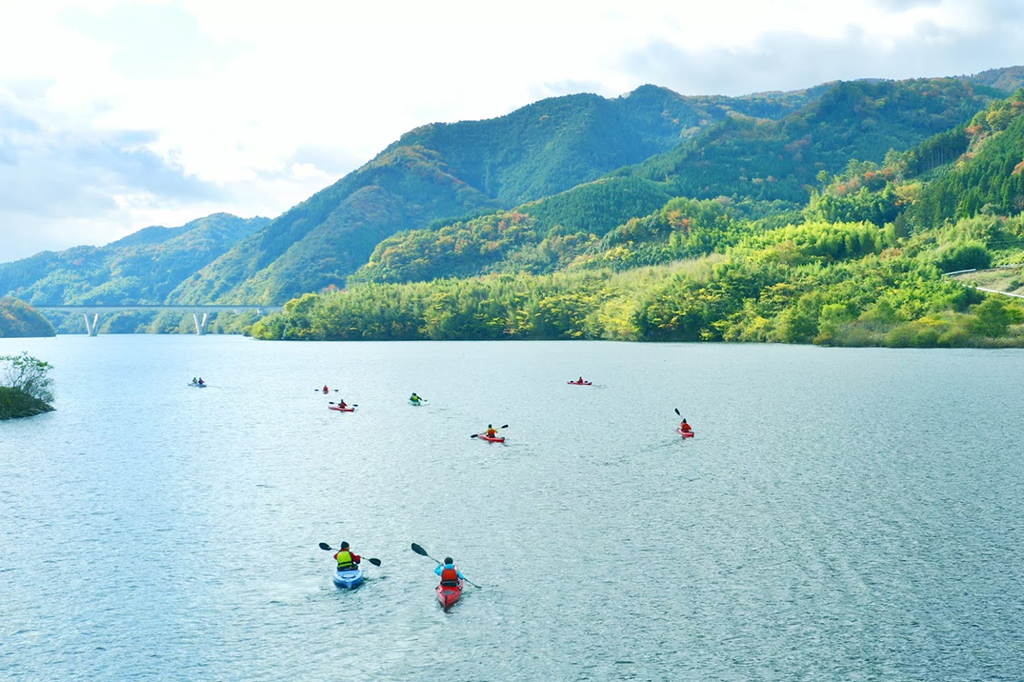
Resting farther inland, Okutsu Lake is a peaceful body of water surrounded by forests that shine golden in autumn and verdant in spring and summer. The Mizunosato Okutsu Lake Visitor Center (みずの郷奥津湖) offers one to two-hour stand-up paddleboarding (SUP) and kayaking experiences that are perfect for beginners. Take advantage of the center’s showers, changing rooms, and cafe to ensure a comfortable nature adventure.
Okayama City

Okayama City, the capital of Okayama Prefecture, is home to a plethora of significant cultural sites, and one of its most unique attractions is Saidaiji Eyo, the “Naked Festival,” held annually on the third Saturday of February at Saidaiji Kannonin Temple. The over 500-year-old festival sees approximately 10,000 men, clad only in loincloths, engage in a fierce scramble for two sacred sticks called shingi. The man who successfully grabs a shingi will be dubbed the “Lucky Man” and receive a year of good fortune.
The energized shouts and clashing bodies set under the winter sky and highlighted by the glow of the temple’s main hall creates an emotionally-gripping experience. You can also observe traditional forms of Japanese prayer, such as Mizugori, in which participants cleanse their bodies and minds with cold water before vying for the shingi.
Tottori Prefecture
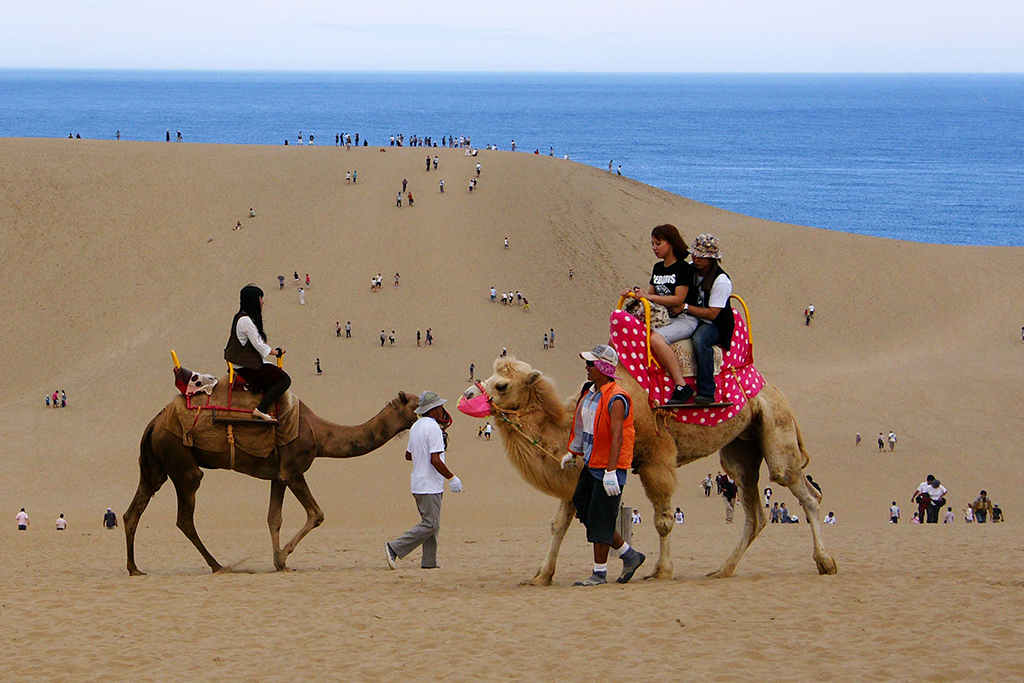
Located just north of Okayama Prefecture, Tottori Prefecture has a wealth of natural beauty—most notably, the Tottori Sand Dunes. Spanning an area of approximately 16 square kilometers, these massive sand dunes are one of Japan’s largest. The dynamic scenery overlooks the ocean, offering a stunning contrast of land and sea in every season. Enjoy camel riding, sandboarding, paragliding, yoga, fat biking, sand art at The Sand Museum, and more!
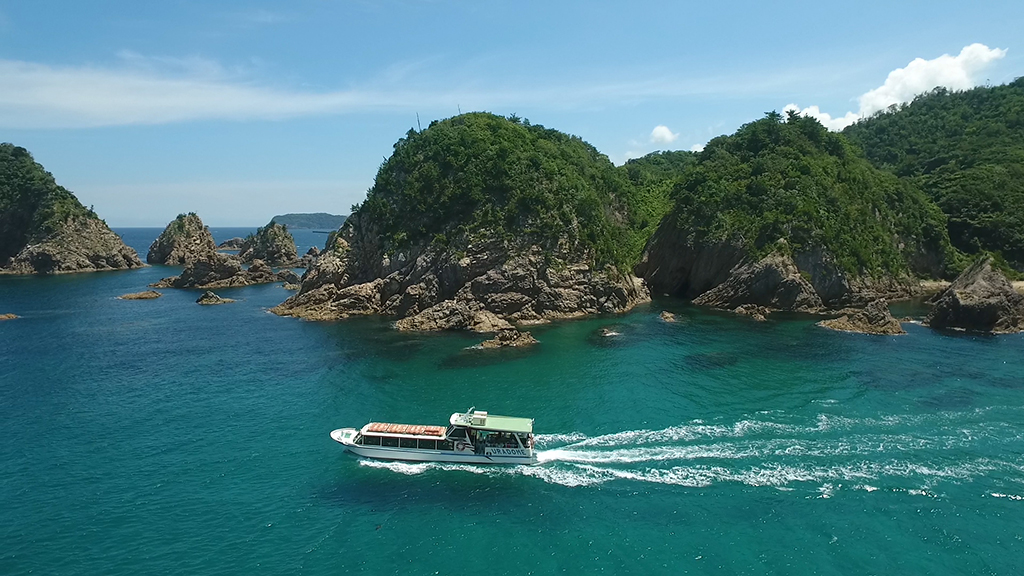
Explore Tottori’s coastal charms with the Uradome Coast Sightseeing Boat. This cruise weaves through remarkably clear, “Iwami Blue” seawater—so transparent that you can see the ocean floor 30 meters below—and provides up-close views of unique rock formations.
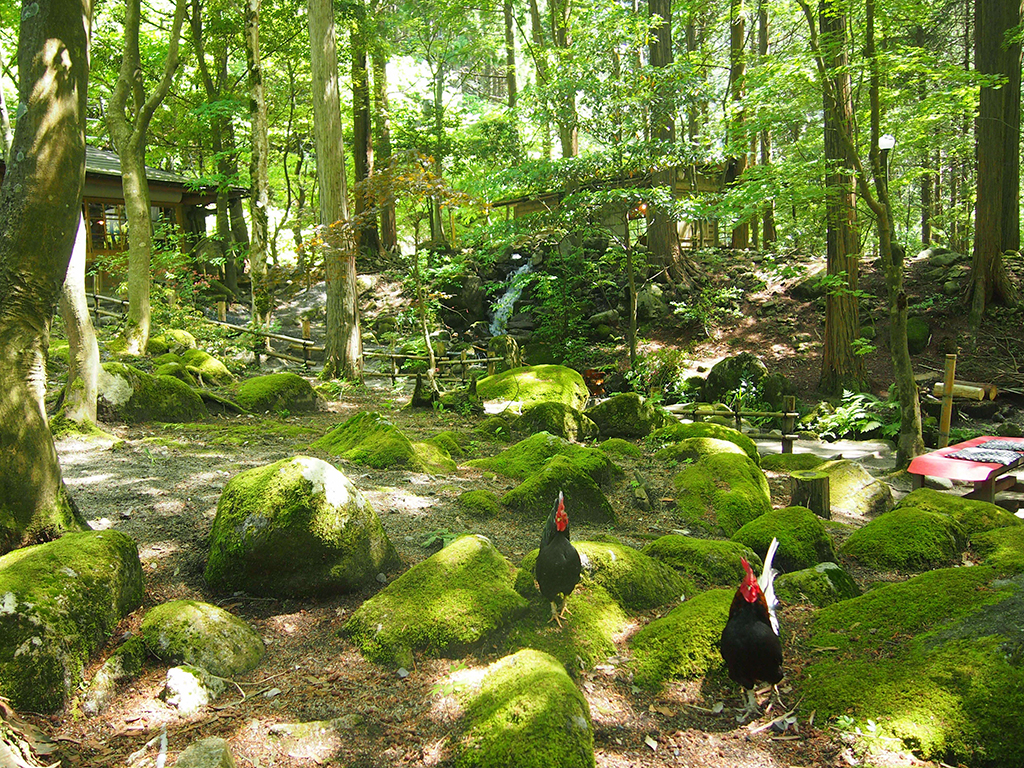
Situated along the picturesque Kitamata River, Mitaki-en is a quaint restaurant that serves seasonal dishes prepared with fresh, local ingredients. Farmhouses with moss-covered thatched roofs harmoniously coexist with the forest, creating a rustic slice of local life. Enjoy mountain delicacies in what feels like the setting of a Japanese folktale.
Shimonoseki City
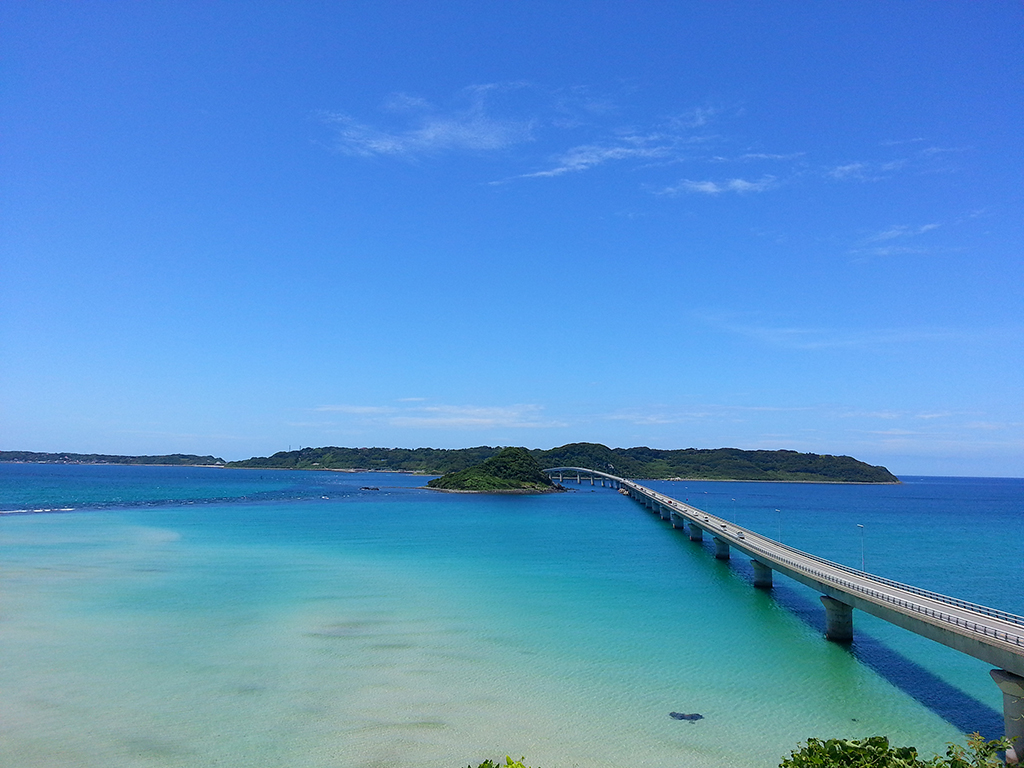
Yamaguchi Prefecture’s largest city, Shimonoseki is famous for its ocean vistas and delicacies. One of its most scenic spots is Tsunoshima, a small island connected to the mainland by the captivating Tsunoshima Ohashi Bridge. This 1,780-meter-long bridge, stretching across cobalt-blue waters, offers a picture-perfect blend of nature and manmade ingenuity. Walk or cycle across this bridge and explore the island’s lighthouse and cliff-lined paths to further immerse yourself in the tranquil environment.
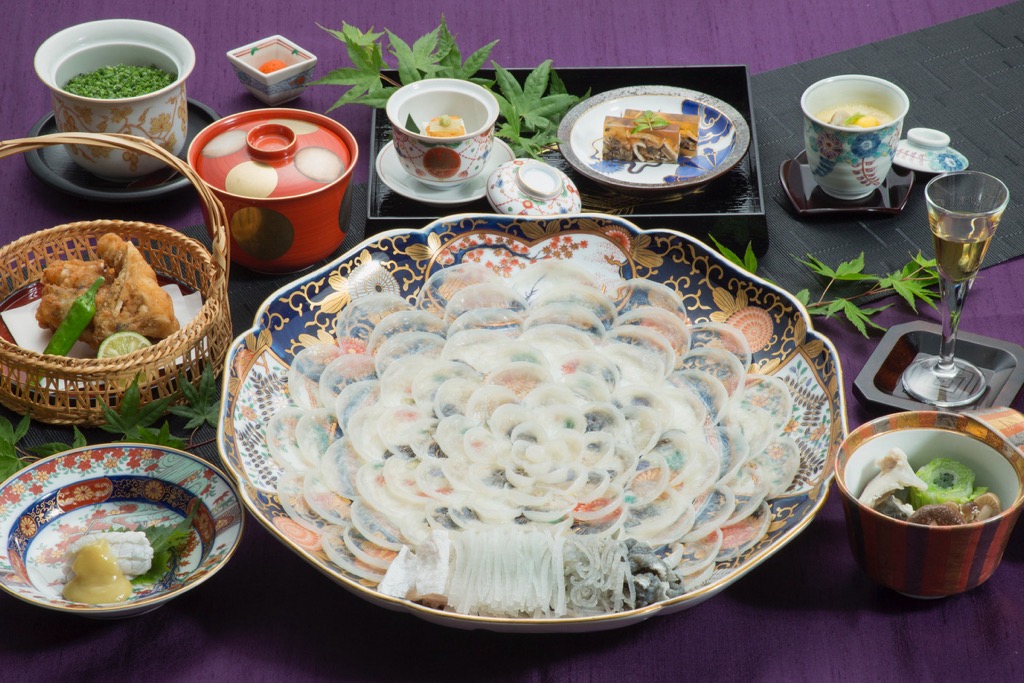
Shimonoseki is also nationally renowned for its fugu, or pufferfish. At Fukuryoan Shimosho-Kaikan, an over 75-year-old restaurant, you can savor traditional, artistically plated pufferfish cuisine and learn the ceremonial movements of the Sentei Festival—a reenactment of historical events—while wearing a special kimono.
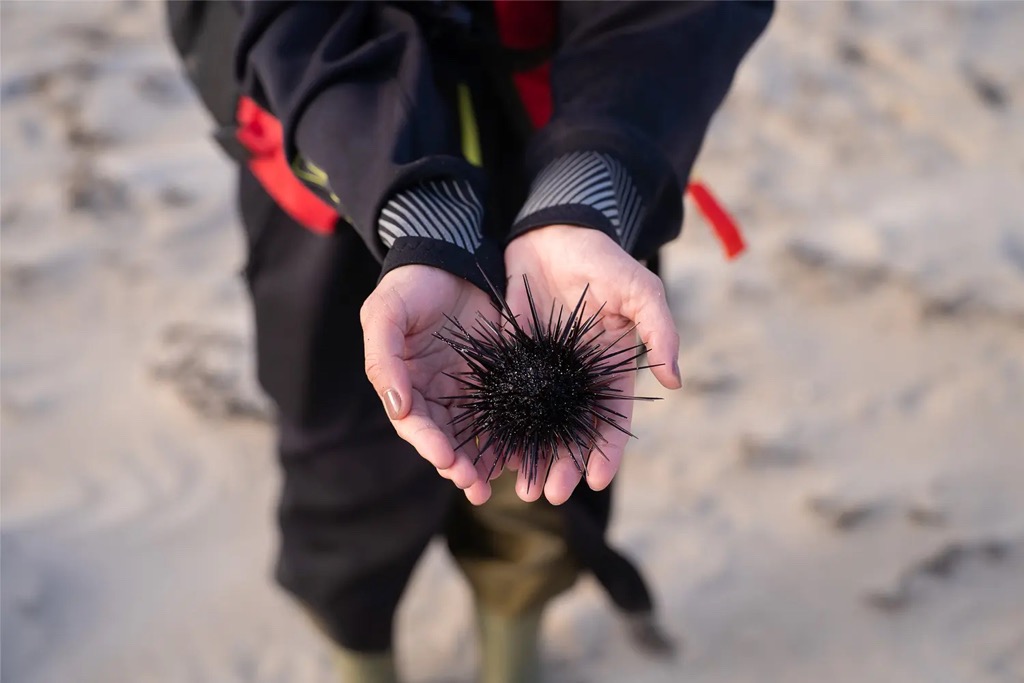
Dive further into the ocean with a sea urchin picking and underwater sake storage experience organized by Kaikousha (海耕舎). This plan includes free diving for the removal of excess sea urchins or viewing the seafloor through a clear kayak, dining on freshly caught sea urchins, and enjoying mellow-flavored sake that has been aged in the ocean. Please note that sea urchin removal is typically only available from April to June and, depending on the year, removal may not be possible.
Kitakyushu City
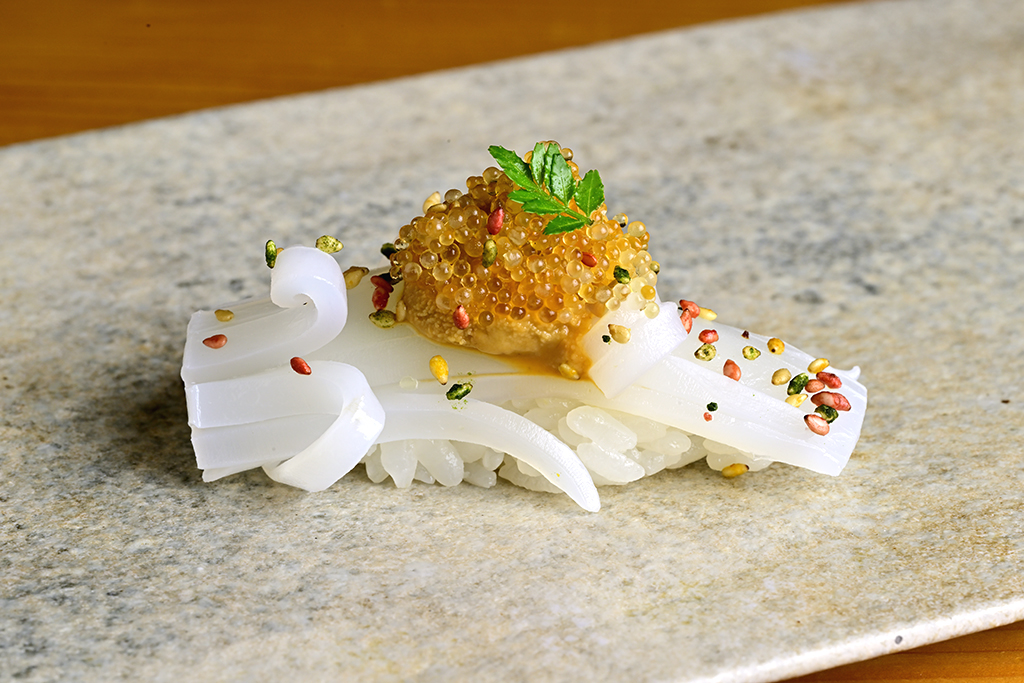
Located in Fukuoka Prefecture and surrounded by three distinct seas, Kitakyushu features a rich variety of seafood year-round. In fact, the city’s central wholesale market, Tanga Market, is one of Japan’s premier locations for high-quality seafood. Unsurprisingly, the city is also famous for its sushi, boasting a legacy built on freshness, technique, and local cooperation. Kitakyushu, sometimes dubbed The Sushi Kingdom, is recognized domestically and internationally as Japan’s sushi capital. Choose from an array of sushi restaurants and enjoy sushi the Kitakyushu way (Kokura-mae)—with salt or citrus rather than soy sauce. Join a sushi-making experience as well and craft handmade delicacies following the expertise of sushi chefs.
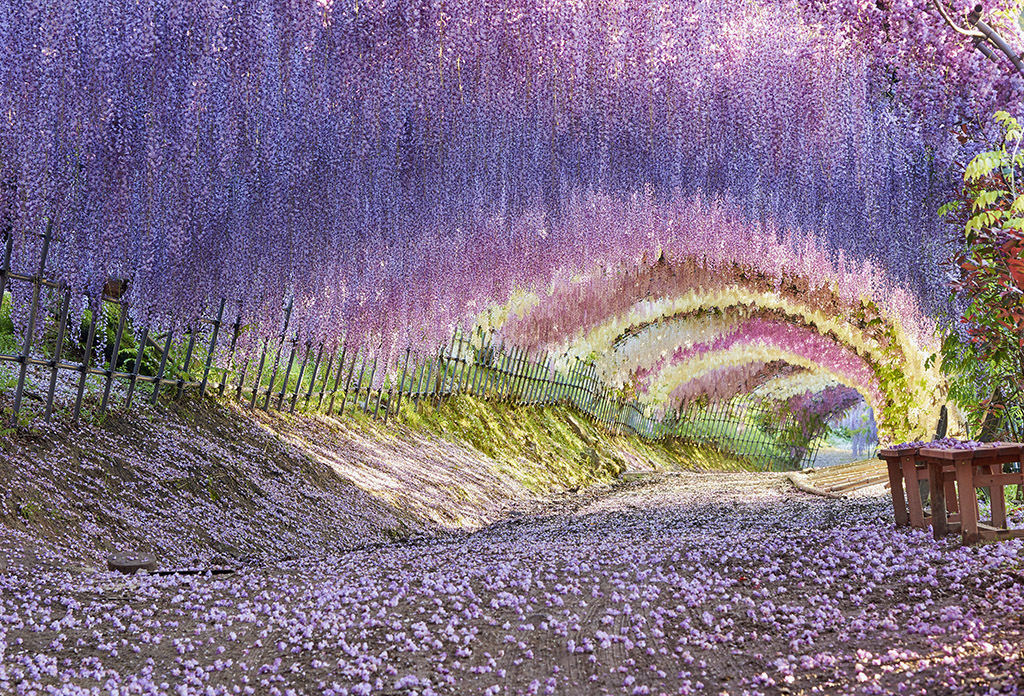
Stepping away from the ocean, Kawachi Fujien is a beloved garden best known for its 22 varieties of wisteria, which bloom from late April to mid-May. In the 110-meter-long wisteria tunnels, immerse yourself in the delicate fragrance and purple hues of this cherished flower. In late November, the garden’s 700 maple trees turn a vibrant red, setting the scene for an enchanting autumn stroll.
Kagoshima City

The cultural, natural, and spiritual heart of Kagoshima City is Sakurajima—one of Japan’s most active volcanoes. Since ancient times in Japan, volcanoes have been seen as sacred, and Sakurajima is no exception. Explore this revered landscape up close with a Sakurajima Cycling Tour, hosted by Volcano Life Journey.

The 3.5-hour cycling excursion starts with a scenic ferry ride to Sakurajima. After disembarking, a specially licensed tour guide will lead you across the volcanic landscape, bringing you close to the crater. As you pedal, the powerful lifeforce of the mountain and Earth itself will envelope you. During the tour, your guide will also provide information about the relationship between nature and human society, such as disaster prevention techniques. Witnessing the active volcano’s close proximity to Kagoshima City is a globally rare sight that encapsulates the coexistence of human life and nature.
Miyazaki City
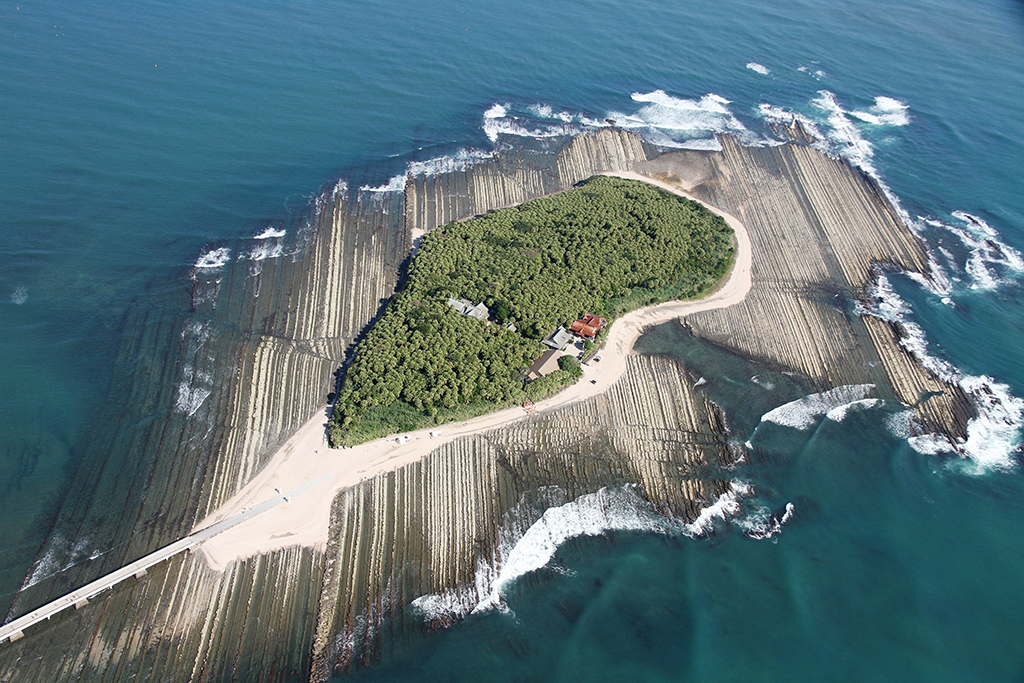
Leave the bustling streets of Miyazaki City behind and step onto Aoshima, a mysterious island where nature and spirituality live in harmony. This tiny island, located off of Miyazaki’s southeastern coast and formed entirely by accumulated seashells, is connected to mainland Japan by a quaint stone bridge and is home to lush subtropical plants, as well as Aoshima Shrine. After Yayoi Bridge meets Aoshima’s sandy shores, a path flanked by pristine beaches, the sea, and forests leads you to Aoshima Shrine’s vermilion torii (gate). Around the island’s perimeter, eye-catching wave-shaped rock formations called Oni no Sentakuita (the Devil’s Washboard) mingle with the ocean, providing extraordinary geological views. This natural landscape formed around seven million years ago due to strata uplift. Over time, wave erosion left only the hard sandstone in plate-like formations. Today, the landscape is designated as a National Natural Monument.
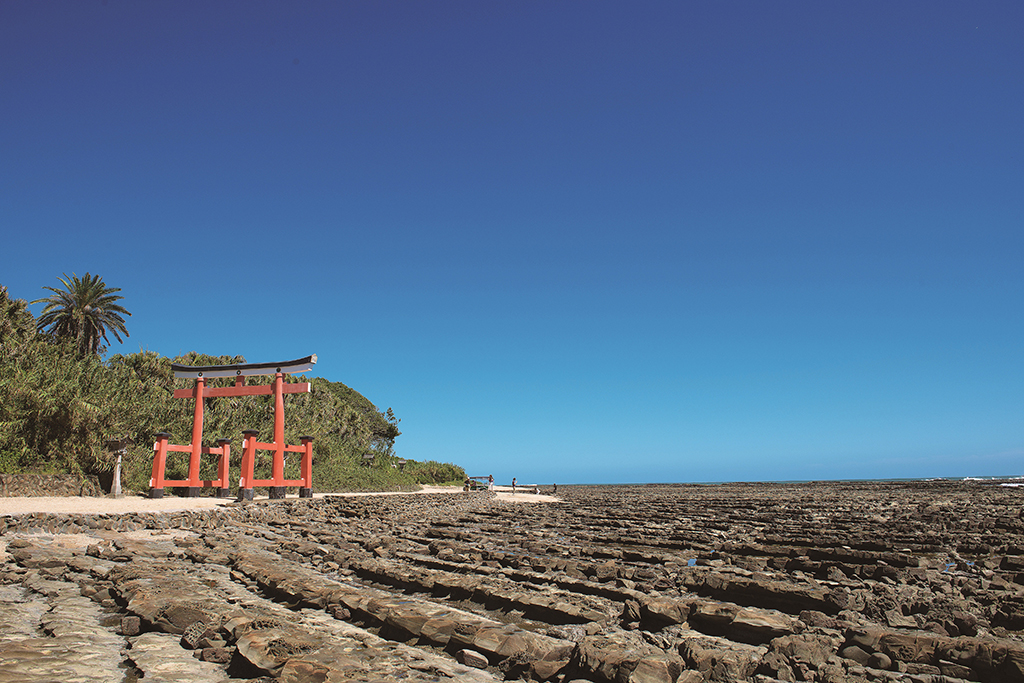
Aoshima Shrine itself is regarded as a power spot for matchmaking and is deeply rooted in Japanese mythology. On the coastline around Aoshima, you can also enjoy several ocean activities, such as kayaking and SUP.
Kumamoto City
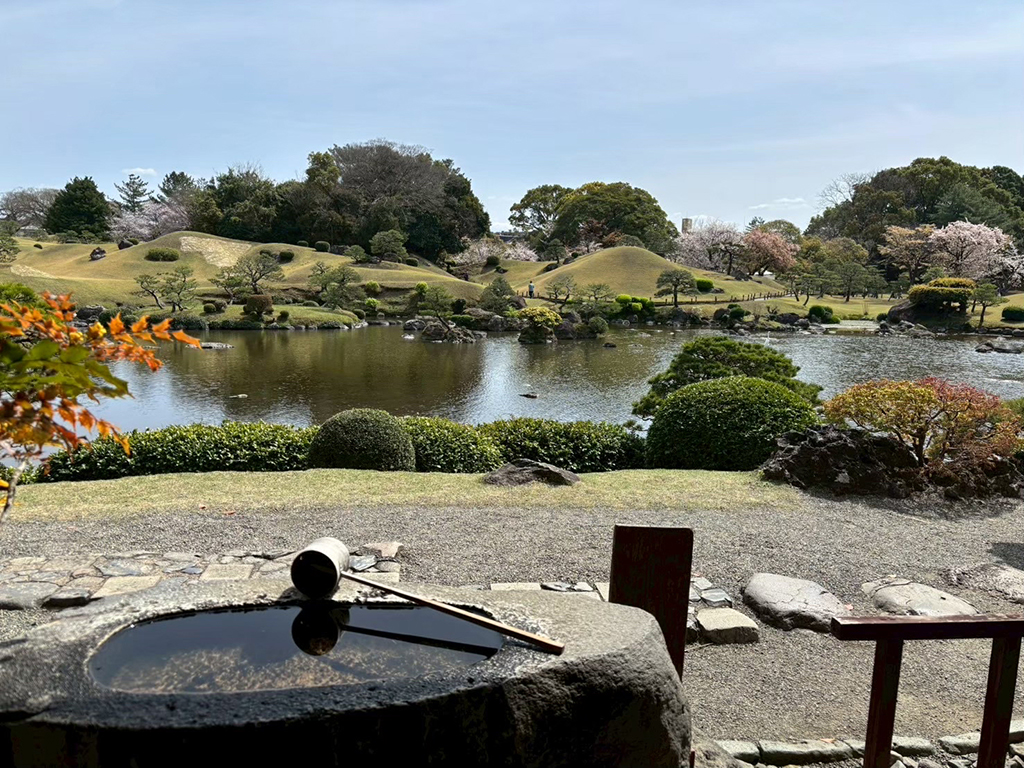
Kumamoto City boasts an enriching blend of culture and nature, and one of the best places to experience this combination is Suizenji Jojuen—a garden housing Izumi Shrine. During the shrine’s annual grand spring and autumn festivals, the garden showcases Yabusame, a traditional samurai equestrian art where the rider shoots a target with a bow while riding a horse. In the past, Yabusame acted as a court ritual and a form of training; however, today it is primarily performed as a Shinto ritual.
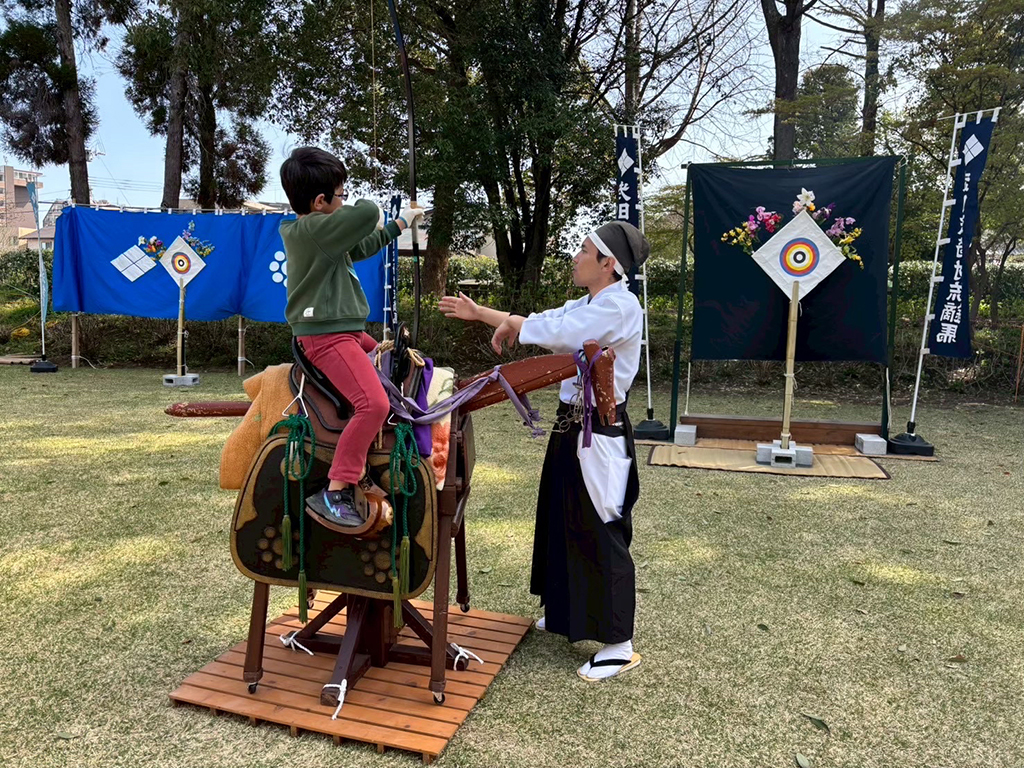
At Suizenji Jojuen, watch riders gallop approximately 150 meters as they shoot three arrows. The impressive art demonstrates the faith and pride of samurai. The festival also offers numerous nature and culture-related opportunities. Pose on a wooden horse in warrior attire, join a peaceful tea ceremony, and try Bonseki, the meaningful art of creating miniature landscapes in a tray.
Iki City
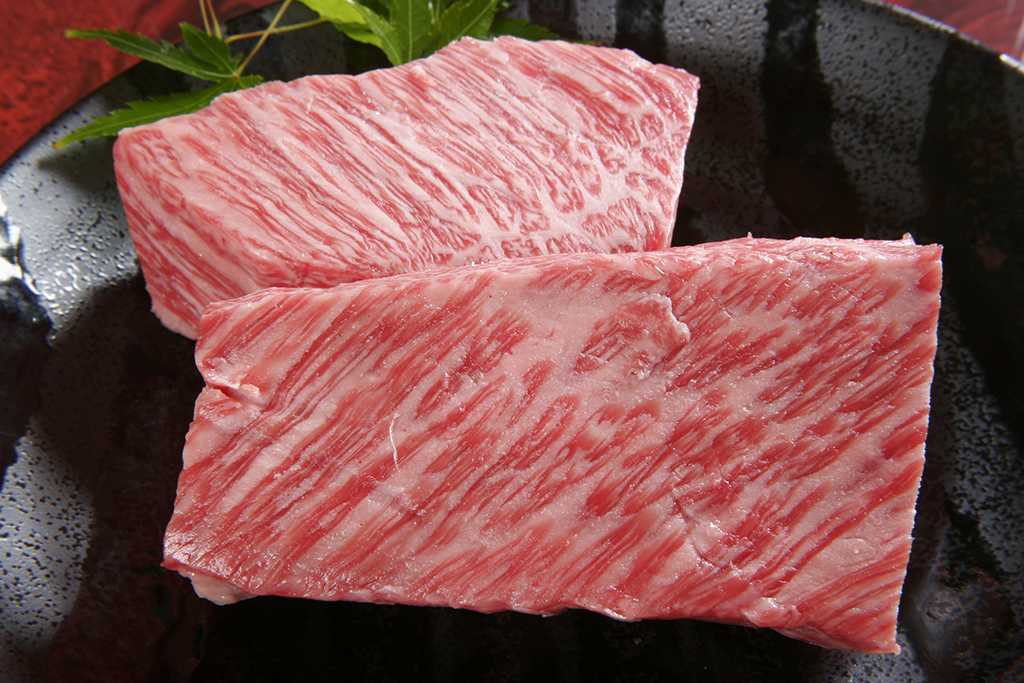
A part of Nagasaki Prefecture, Iki is a lush island known for its natural beauty and high-class gastronomy. One of its most prized culinary delicacies is Iki Beef, a type of Japanese wagyu. On the island, cows graze on mineral-rich grass enriched by the sea breeze, resulting in a unique flavor. These calves raised on Iki become the source for famous types of wagyu, like Kobe Beef and Matsusaka Beef. Apart from its rarity, Iki Beef is known for its low melting point, rich flavor, and clean finish. After your first bite, the beautiful marbling, tender texture, and savory taste will completely capture your senses.
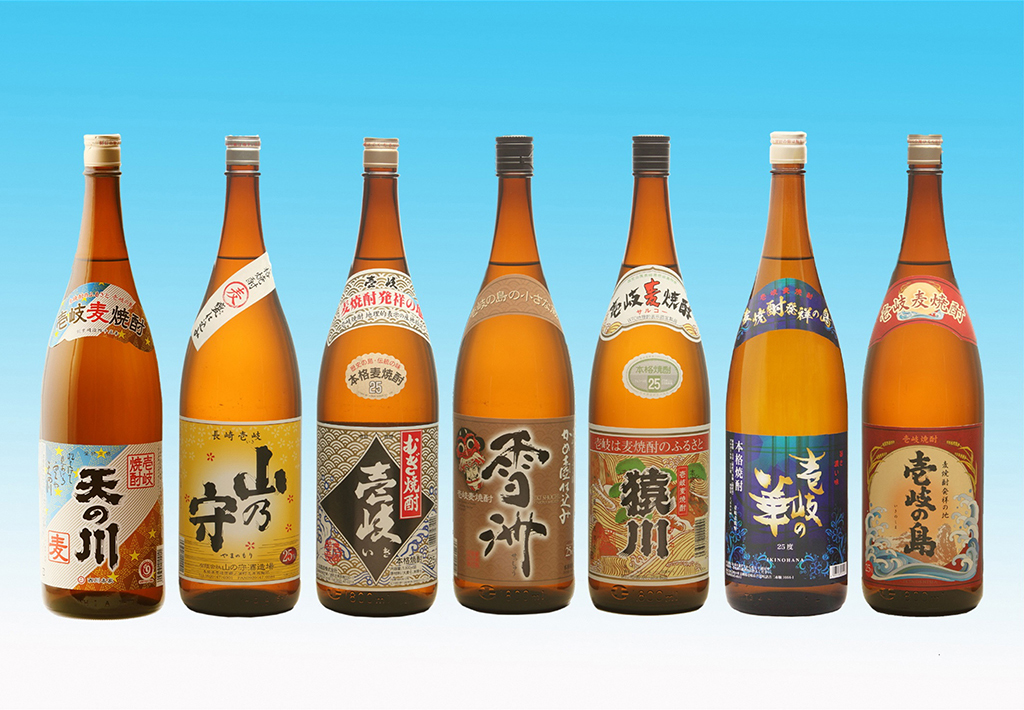
The island is also considered the birthplace of mugi shochu, a distilled spirit made from koji mold, rice, and barley. Iki shochu is a world-renowned liquor that has received geographical indication protection from the WTO. The mild-flavored alcohol is easy to drink and characterized by the aroma of barley and sweetness of rice. Enjoy tours and tastings at the island’s seven distilleries!
Nagasaki City
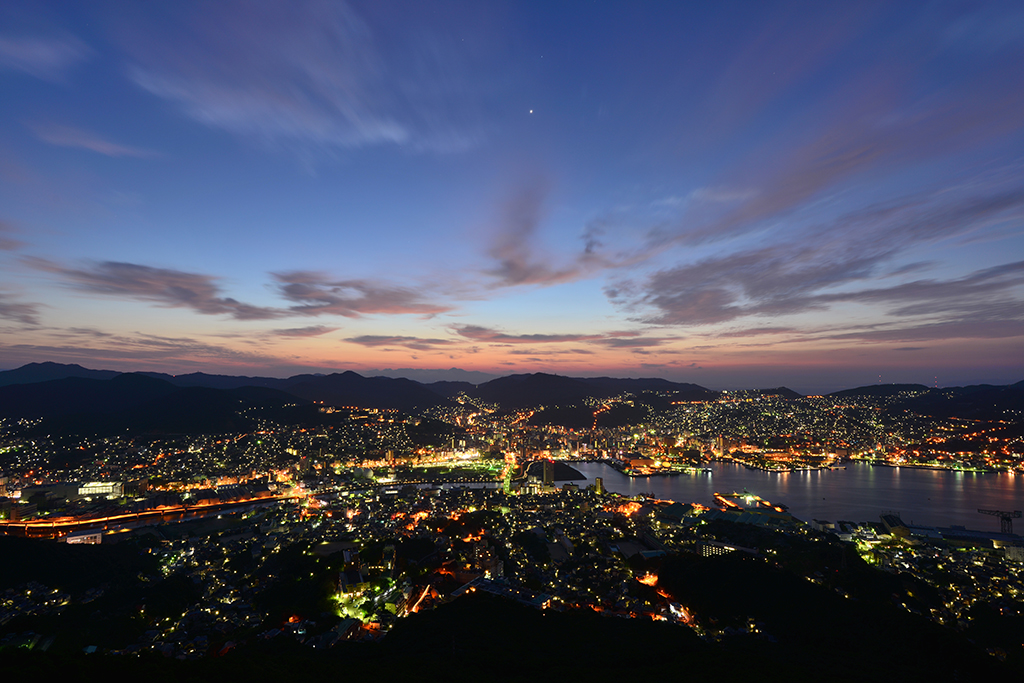
Nagasaki City is located in a bowl-shaped terrain surrounded by mountains and centered on Nagasaki Port. West of the port, rises Mt. Inasa, a 333-meter-tall mountain popular for its stunning panoramas and accessible via a glass-walled gondola on the Nagasaki Ropeway. At the summit, the observation deck treats you to one of the “New Big Three Night Views of the World.” The culmination of urban life, lush forests, and the ocean creates stunning vistas that shift beautifully with the time of day.
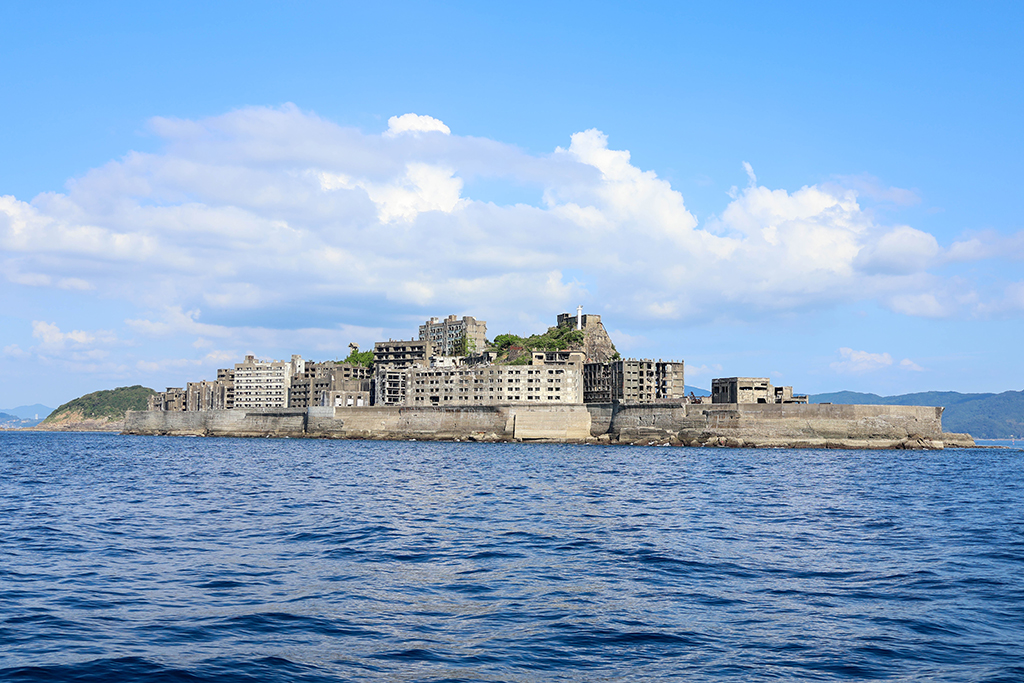
In the ocean, Hashima Island, also known as Gunkanjima, offers unique insights into a society slowly being reclaimed by nature. This artificial island originally prospered as an undersea coal mine, before it was abandoned in 1974. Today, you can join landing tours led by specialized guides that allow you to explore accessible areas. The ruins, eroded by the wind and interspersed with vegetation, paint an oddly alluring picture of nature and history.
Western Japan: Your next outdoor adventure
Awe-inspiring ocean views, impressive sand dunes, unique festivals, fresh gourmet, mountain panoramas, and exciting activities await! Craft a trip you will not soon forget in Western Japan.
Local government resources
Okayama Prefecture
Okayama City
Tottori Prefecture
Shimonoseki City
Kitakyushu City
Kagoshima City
Miyazaki City
Kumamoto City
Iki City
Nagasaki City
















